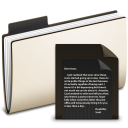چاپ صفحه | صفحه نخست سامانه |  چکیده مقاله |  نویسندگان |  دانلود مقاله | علوم پزشکی بابل |


| Honey has been used as a nutraceutical in many traditional and ancient remedies. Considering well documented benefits of honey to accelerate wound healing, for the first time we aimed to assess intra oral surgical wound healing process with honey. Methods: We designed a pilot randomized placebo controlled cross-over clinical trial. Patients who required bilateral Modified Widman Flap (MWF) surgery randomly assigned to receive either 15 cc topical Persian Thymus Vulgaris concentrated honey three times a day or normal saline as placebo with the same amount at the site of the surgery for seven consecutive days. After a 35-day wash-out period the study groups were crossed. The primary efficacy outcome was changes in healing index (Landry index) and the secondary efficacy outcome were changes in gingival and plaque indices (Loe & Sillness, Sillness & Loe indices). It also includes safety issues consisting of any allergic reaction, delayed healing or wound dehiscence. Results: Ten patients enrolled with the mean age of 36 (±1.5) ranged between 35-40 yrs. There was a significant improvement in wound healing considering time and treatment effects in both groups, although faster wound healing observed in honey treated patients (P<0.001). In both groups gingival indices were noticed to be improved by the time during the first phase of the study. Both groups displayed aggravated Plaque formation; nevertheless it was merely statistically significant in the control group [F (3, 27) =12.88, P value < 0.001]. All wounds healed normally and no adverse events recorded. Conclusion: Our study established the safety, efficacy and feasibility of topical honey to promote periodontal surgical wound healing. (IRCT138901192547N2) |

| نویسنده | نفر چندم مقاله |
|---|---|
| محمود خسروی سامانی | اول |
| آرش پور ستار | بیشتر از ده نفر |

| نام فایل | تاریخ درج فایل | اندازه فایل | دانلود |
|---|